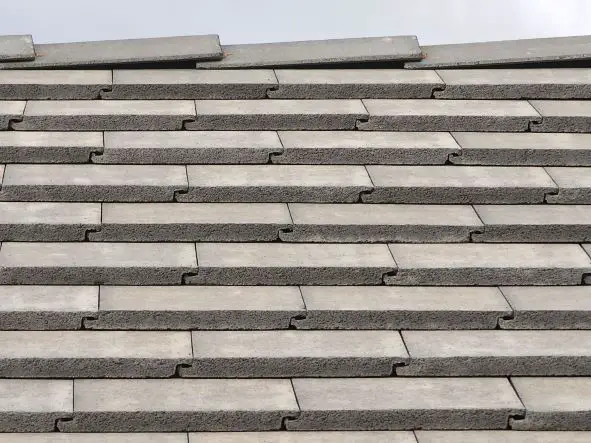Clay and Concrete Roof Tile Manufacturers Directory
By Jack Gray, Roof Online Editor • Last updated August 6, 2024
To learn more about tile roofing, see our articles on Clay Tile and How to Repair Tile Roofs.
Return to the Roofing Manufacturer Directory Index

Clay and concrete roof tiles are two popular materials used in roofing because of their durability, aesthetic appeal, and time-tested, exceptional performance as roofing materials. Here’s a quick introduction to both:
Clay Roof Tiles
Clay roof tiles are made from natural clay that is shaped and then fired in a kiln to harden. The process of making clay tiles can be traced back thousands of years and they are known for their longevity and distinctive appearance. Clay tiles are often associated with Mediterranean, Spanish, and Southwestern architectural styles. They come in a variety of shapes, including flat, S-shaped, and barrel tiles.
Key Points:
- Durability: Clay tiles are extremely durable, capable of lasting for over 100 years in some cases. They are resistant to rot, pests, and fire, making them a safe and long-lasting roofing option.
- Thermal Properties: The natural thermal resistance of clay helps in regulating indoor temperatures, keeping homes cooler in the summer and warmer in the winter.
- Aesthetic Appeal: Clay tiles add a classic and elegant look to buildings, enhancing curb appeal and potentially increasing property values.
- Low Maintenance: Once installed, clay tiles require minimal maintenance, mainly involving inspections and occasional cleaning to remove debris.
Concrete Roof Tiles
Concrete roof tiles are made from a mixture of cement, sand, and water. The mixture is molded under high pressure and then cured to form a hard and durable tile. Concrete tiles can mimic the appearance of clay tiles, as well as slate and wood shakes, offering versatility in design.
Key Points:
- Versatility: Concrete tiles come in a wide range of colors and styles, providing flexibility in design to match various architectural styles.
- Durability: Like clay tiles, concrete tiles are very durable and have a long lifespan, often exceeding 50 years. They are resistant to damage from hail, wind, and fire.
- Energy Efficiency: Concrete tiles have good thermal mass, helping to reduce the need for heating and cooling, which can lead to energy savings.
- Cost-Effective: While offering similar benefits to clay tiles, concrete tiles are generally less expensive, making them a cost-effective roofing solution.
Both clay and concrete tiles share some common advantages, such as durability, aesthetic appeal, and energy efficiency. However, they also have some unique characteristics that make them suitable for different applications, budgets, and architectural styles. Their ability to withstand harsh weather conditions, their low maintenance requirements, and their relatively long lifespans make them excellent choices for roofing in a variety of climates and regions.
*****
If you are a reputable and qualified roof tile manufacturer and feel that we’ve overlooked your company, feel free to contact us to ask to be added to this list.
Roof Tile Manufacturers List
- ArteZanos Hybrid Roofing Systems – “…high quality traditional handmade clay products & the development of innovative roofing products.”
- BMI Group – Clay Roof Tile, Concrete Roof Tile, Chimney Systems
- Crown Roof Tiles – Concrete Roof Tile
- Custom Tile Roofing – “The Custom Tile Roofing tile yard boasts one of the most comprehensive historic tile inventories in the country. With hundreds of different styles and manufacturers…”
- Dreadnought Tiles (UK) – Clay Roof Tile
- Eagle Roofing Products – Concrete Roof Tile
- Gladding, McBean – Clay Roof Tile
- Ludowici Roof Tile, Inc. – “…offers more than 40 different terra cotta roof tile profiles…”
- Marley (UK) – Clay Roof Tile, Concrete Roof Tile
- MCA Superior Clay Roof Tile – Clay Roof Tile
- Redland Clay Tile Inc. – Clay Roof Tile
- Roofing Distribution UK (UK) – Clay Roof Tile, Concrete Roof Tile, Fibre Cement Slate, Natural Slate, Solar Roof Tile
- Tejas Borja (Spain) – Clay Roof Tile, Solar Roof Tile
- Terracotagres Roof Tiles – Ceramic Roof Tile
- Tile Roofs, Inc. – “…new hand finished clay roof tiles and salvaged historic/vintage clay and concrete roof tile and fittings.”
- Tudor Roof Tiles (UK) – Clay Roof Tile
- Vande Hey Raleigh Mfg., Inc. – Concrete Roof Tile
- Verea Clay Tile – Barrel, Flat, and Spanish Clay Roof Tile
- Westlake Royal Roofing Solutions – Clay and Concrete Roof Tile Products